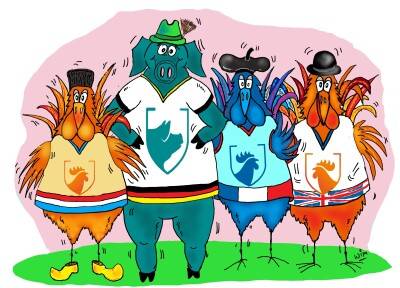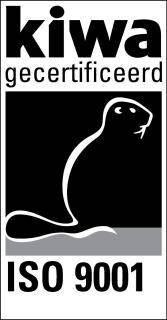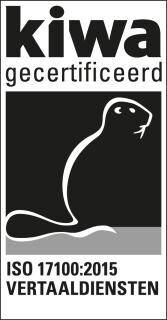
How to create a multilingual website
Your website is often the first way many customers get to know your company. And we all know what they say about a first impression. You only have one chance to get it right. That’s why you have to think carefully about the information you want to share, carefully choose the tone of voice to address your visitors, and also make sure you have an attractive and appealing design.
If you’re only operating in one country, that’s all there is to it. If you're operating internationally, there’s a lot more involved. You’ll want to communicate with your customers in their native language, and that entails more than simply translating your current website. A good multilingual site often requires a completely different approach, which needs to be well thought out before a single letter is written down.
You can approach it in different ways, but we advise making an effective action plan first. This way, you’ll have a useful tool that covers every aspect of the process during the development phase of the site.
Step 1 Make an inventory of the countries where you are active
Each country has its own language, and its own culture, values, norms and preferences. First make a list of the countries your company is active in. Once that's been done, you’ll have a rough idea of how to design your website effectively, and how to fill it with content. Look for similarities and components of the website that are relevant to each country. This will save you a lot of work and unnecessary changes later on in the process. Products and services that you sell in every country can be given a more prominent place than say, niche products only intended for a few markets. You can take this into account when designing your website.
Step 2 Choosing your website address
Choosing the address for your multilingual website shouldn't be underestimated. If you haven’t already done so, registering your own domain name is a good idea. After all, a URL like www.freewebsite.com/mycompany7498236 doesn’t exactly look professional.
The best, and most reliable choice is a ccTLD (country-code top-level domain name). This is a top level internet domain, and your URL gets a country specific extension. Using the .nl extension for example, means you can target the Netherlands. The .de extension stands for Germany and co.uk is your English language website for the United Kingdom. The major advantages of ccTLDs are that your website will automatically be targeting the right country and that ccTLDs are very SEO friendly. There are however, a few drawbacks. One is that you have to pay separately for each domain name, and a domain name in another country may already have been taken. Alternatives to a ccTLD include subdomains (nl.mijnwebsite.com, de.mijnwebsite.com) and subdirectories (mijnwebsite.com/nl, mijnwebsite.com/de). These are cheaper options, but less user friendly.
Step 3 Create a visually appealing design
What’s the first thing you notice when you visit a website? It’s not the content, but the design. A clearly organised, attractive design makes a strong, professional first impression immediately, and invites the visitor to continue reading. So provide a clear menu structure, so that (potential) customers can quickly find specific information of interest. Give popular products a prominent place on your homepage to ensure increased findability.
Don’t forget that a website is a very fleeting and visual medium. Large chunks of text are a turn off for visitors, so keep in mind that the layout should be short and concise. Make sure to include enough images to enliven the image of your website, as in this context, a picture really is worth a thousand words. Pay attention to the photos and illustrations if they include people. Ensure that they are recognisable as inhabitants of the country the specific version of your multilingual website is aimed at. If necessary, you should also look to localise these visuals, to adapt them to the local market.
Step 4 Have your website written and translated by professionals.
Having made a series of decisions based on this method, it’s time for the most important one: writing the content for your multilingual website. If you offer the same products and services in each country, it’s fine to write the texts in your native language. Then have them translated into the required languages. If you have country specific product ranges, it’s best to compile and write (parts of) the content for each country.
Writing a text for a website is a profession in its own right. Just as with a brochure or a paper based advertisement, you need to ensure that the text is easy to read and engaging. But there is another aspect to online texts: SEO (search engine optimisation). This means including relevant keywords in the content, words that are frequently found by search engines such as Google. If this is done well, your listing will be found much higher up in product search results. As a result, your website will receive more visits and you can expect an increase in product sales. Investing in a copywriter who is specialised in SEO will, more often than not, lead to a quick recovery of the original outlay.
This is one of the reasons why it’s important that your content is provided by professionals, who know how to write effective texts, and are familiar with the local culture and its customs. So use a professional text and translation agency like AgroLingua. They employ native speakers who know your products and the local market, know the difference between translation and localisation, and ensure that your multilingual website will always be found, in all countries.
Step 5 Keep your website up to date.
Unlike printed marketing materials, a website is quick and easy to maintain and update. That’s useful, as it allows you to change the content immediately if required by updating your product range, branch details, or posting the latest company news. New content must also be effective and easy to read, and the style must reflect that of existing texts. You must also take search engine optimisation into account. That’s why you should entrust the maintenance of your website content to a professional text and translation agency like AgroLingua.
Want to know more about creating and maintaining a multilingual website? Then get in touch with the translation and localisation specialists at AgroLingua!






